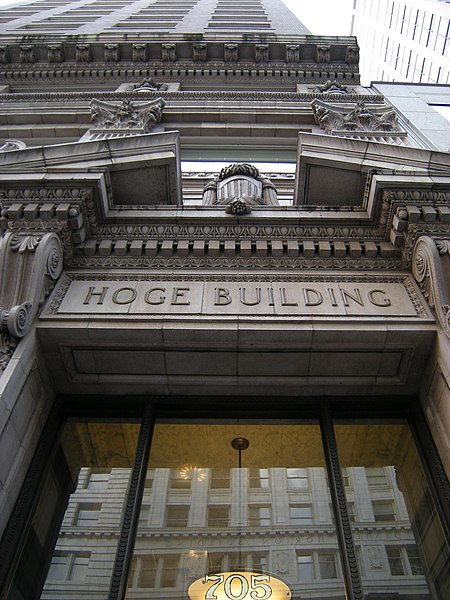Hoge Building
1900s architecture in the United States1911 establishments in Washington (state)Commercial buildings completed in 1911Emporis template using building IDNational Register of Historic Places in Seattle ... and 2 more
Office buildings on the National Register of Historic Places in Washington (state)Skyscraper office buildings in Seattle

The Hoge Building is a 17-story building constructed in 1911 by, and named for James D. Hoge, a banker and real estate investor, on the northwest corner of Second Avenue and Cherry Street in Seattle, Washington. The building was constructed primarily of tan brick and terracotta built over a steel frame in the architectural style of Second Renaissance Revival with elements of Beaux Arts. It was the tallest building in Seattle from 1911 to 1914 with the completion of Smith Tower.
Excerpt from the Wikipedia article Hoge Building (License: CC BY-SA 3.0, Authors, Images).Hoge Building
2nd Avenue, Seattle International District/Chinatown
Geographical coordinates (GPS) Address External links Nearby Places Show on map
Geographical coordinates (GPS)
| Latitude | Longitude |
|---|---|
| N 47.602997222222 ° | E -122.33363888889 ° |
Address
Hoge Building
2nd Avenue 705
98104 Seattle, International District/Chinatown
Washington, United States
Open on Google Maps








